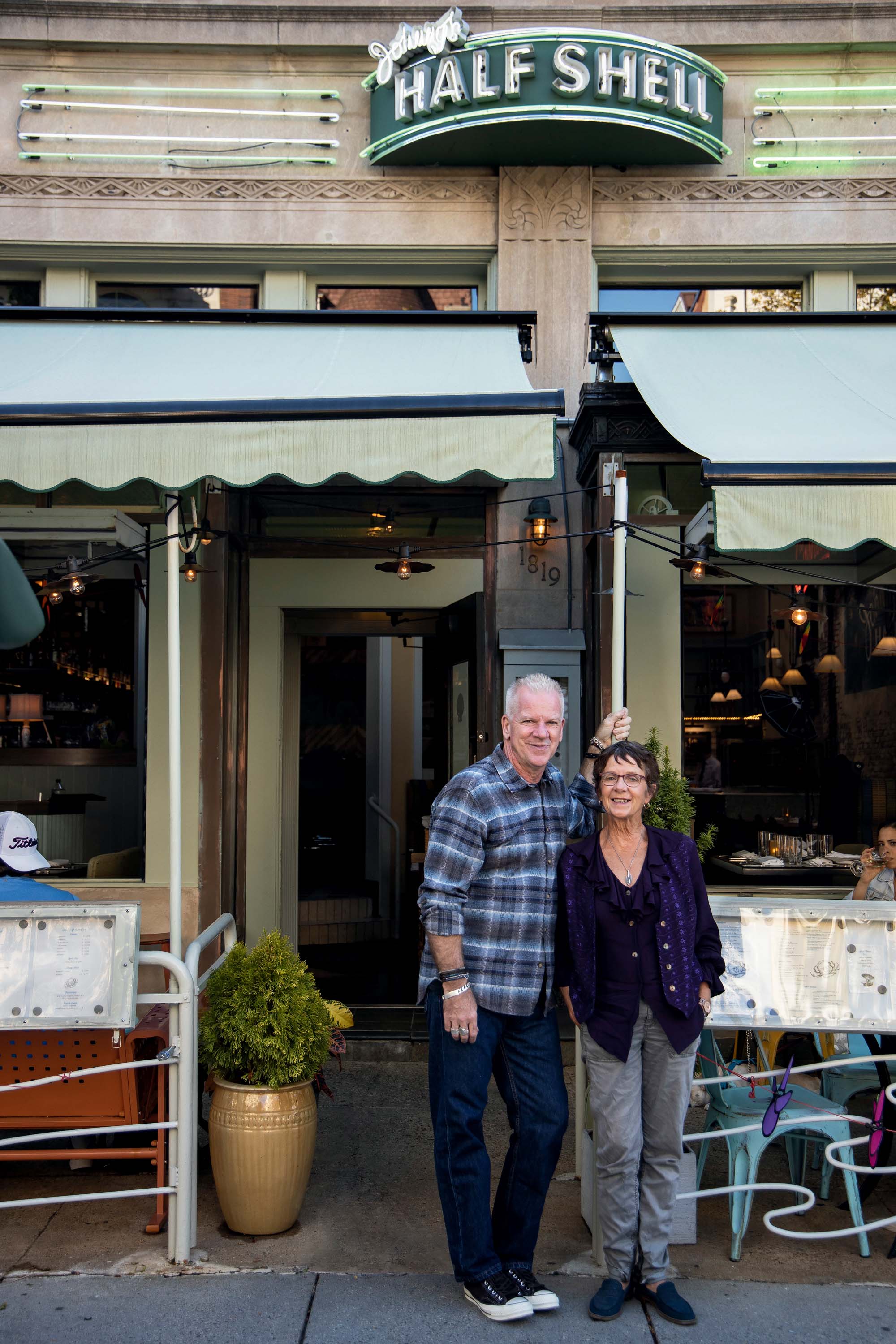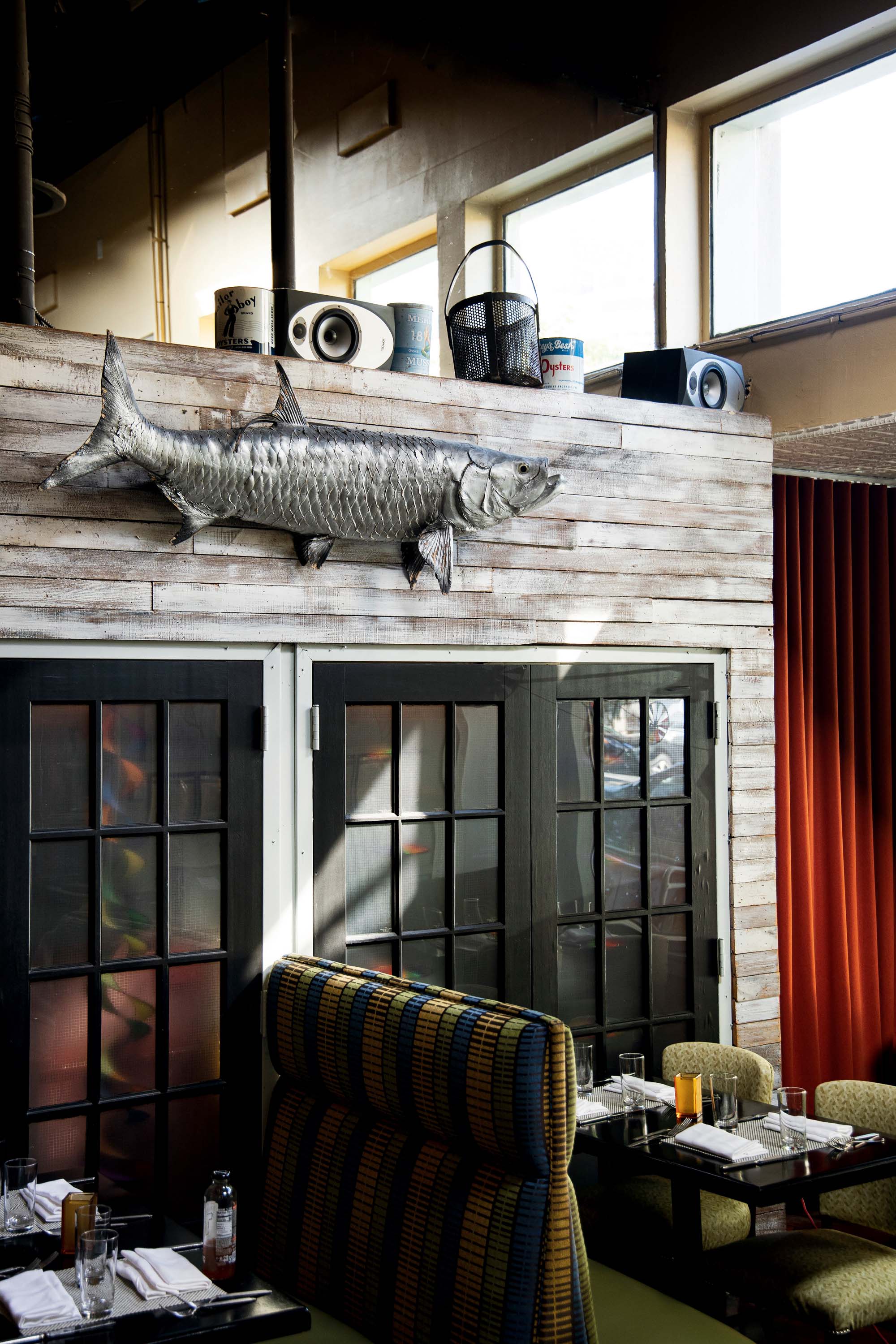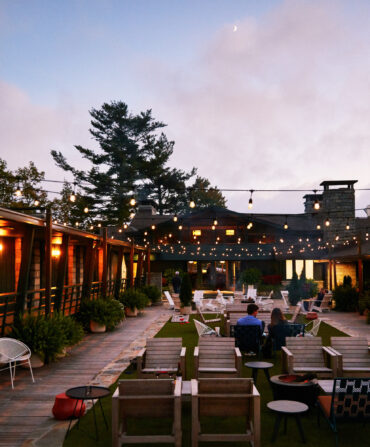The text from Jess came at about the same time a plate of fresh-shucked oysters—fried soft and floated on chervil-flecked tartar sauce alongside a stack of pickled vegetables—hit the bar top: “I’m happy and with my boys.” After moving our son into his freshman dorm at American University, my wife, Blair, and I had retreated to Johnny’s Half Shell, in search of good food and steadying drink. Jess had found a home in his new home of Washington, D.C. Three hours, two cocktails, one bottle of Champagne, and half the menu later, we found our home, too.
Chef Ann Cashion and front man Johnny Fulchino opened their first D.C. restaurant in 1995. Cashion’s Eat Place, in the Adams Morgan neighborhood, leveraged the local farm markets, French and Italian influences, and scenes from Cashion’s Jackson, Mississippi, childhood. A native of Massachusetts with a haddock brogue, Fulchino built the wine cellar and worked the crowd. The menu—from crisp sweetbreads on wilted greens to pastured chicken with pan sauce—changed nightly, and the service was smart and informal. Reviewers described Cashion’s as one of the city’s best chef-driven New American restaurants.

Photo: Jennifer Chase
Johnny Fulchino and chef Ann Cashion.
Johnny’s, which Cashion and Fulchino opened down the hill in Dupont Circle in 1999 and moved here to the original Cashion’s location after that restaurant closed in 2016, has always focused, instead, on repertory cooking. Led by Jorge Rubio, an El Salvador–born veteran of twenty years in the restaurant, the Johnny’s kitchen does right by standards that cooks from the mid-Atlantic, the Gulf Coast, and beyond have contributed to the canon of American classics.
Brett Anderson, who served as the restaurant critic at the Times-Picayune in New Orleans for nearly twenty years, introduced me to the term repertory cooking. He compared the music of New Orleans to the cooking of New Orleans. Mardi Gras Indian chants and filé gumbo are both repertory. They require that the artist know the canon well enough to replicate the traditional forms, he said, and riff on those forms to make songs and dishes that are old and new, iterative and graceful.
Seated on a raised platform, framed by mod columns, regulars lean in to the long curved bar for such happy-hour specials as five-dollar cocktails, five-dollar pours from Johnny’s cellar, and ten-dollar plates of those delicate fried oysters. Maritime knickknacks and flattened oyster pails decorate the walls. Books by and about some of Fulchino’s favorite musicians—Keith Jarrett, Bill Wyman, Sam Cooke—stock the shelves. Songs by those musicians stream from the speakers, a reminder that not all restaurant sounds need be schlock.
When Cashion’s opened here a quarter century ago, Adams Morgan was home to late-night bars and falafel takeaways. Today it’s comparatively swank. An old church is now a new boutique hotel. This version of Johnny’s, confident and unpretentious, is a legacy of that old neighborhood. Some
of the original menu items endure, including a brace of chicken wings that owes its origins to Buffalo, New York, but has fully paid down that debt. Frenched by veteran cook Natividad Diaz to clear away sinew and form a perfect lollypop, those drumettes get basted with lime juice and Tabasco as they cook over a charcoal fire. Dunked in a green goddess dressing that goes long on garlic, they are just the kind of repertory cooking that reaches its apogee at Johnny’s.

Photo: Jennifer Chase
A touch of maritime flavor in the dining room.
From the bar we watch regulars tuck into blue leather booths, set against a mottled red-and-beige brick wall, lit by the neon Cashion’s sign that once hung outside. Following their lead, we eat a horseradish-brightened shrimp cocktail, a fat rib eye crossed by a pair of onion rings, a crab cake that challenges Baltimore institution Faidley’s for the crown, and a pork schnitzel, served with a heap of potato salad that tastes, in the best way, like the leavings from the bottom of a Lowcountry boil pot.
Cooking and music, born of a place and a people, are conversations across generations. The ongoing conversation at Johnny’s reminds diners that great restaurants don’t have to rely on newness and novelty and pretense. At a moment when the hospitality industry struggles to recruit and keep kitchen staff, and labor costs spiral higher and higher, repertory cooking, Cashion and Fulchino say, is a more sustainable path for restaurants that aim to make it through the 2020s. To master the classics, they suggest, is more rewarding than overextending the abilities of their kitchen while chasing the next trend.
Rattled that our only son is now going to make his home fourteen hours from our home in Mississippi, Blair and I want to extend our dinner. But we don’t want dessert. Our lobster arrives with the claws already cracked, as if we’ve been given permission to drive golf balls from the children’s tee. Picking white meat perfumed with charcoal smoke and fennel from a red shell, dunking ragged hunks of that sweet flesh into a crock of melted butter, spritzing lemon wedges to counterpunch the richness, we taste the straightforward cooking that will sustain our little family, now that Blair and I have claimed Johnny’s as our D.C. family dining room.








